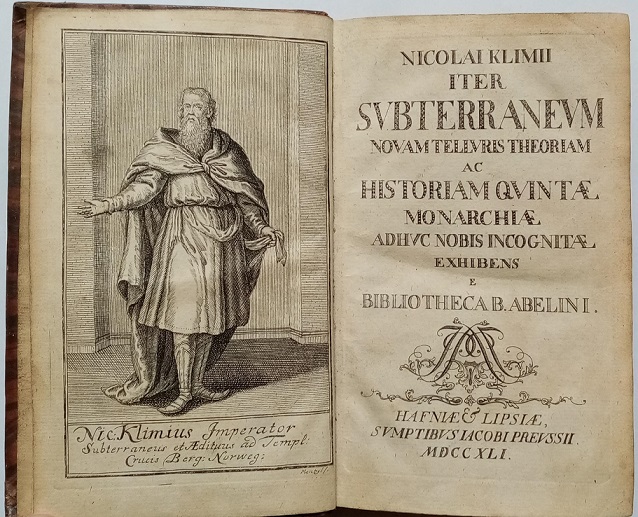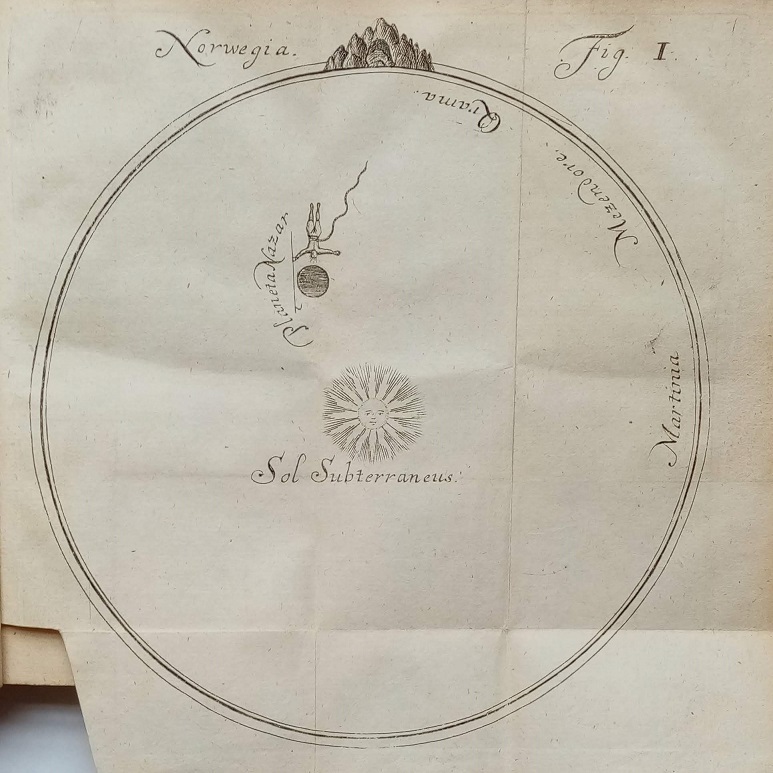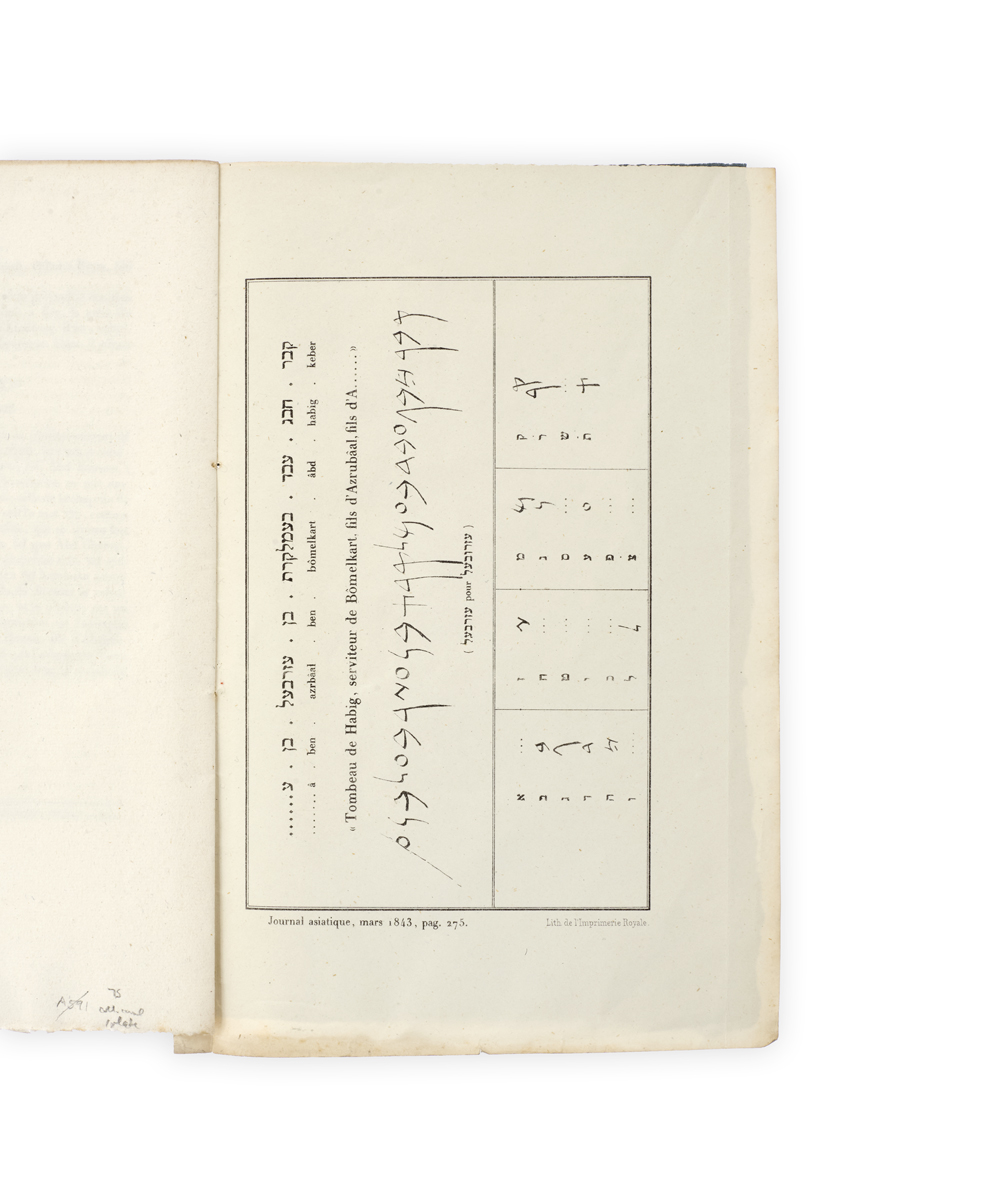



JOURNEY BENEATH THE SURFACE OF THE EARTH
[HOLBERG, Ludvig, Baron].
Nicolai Klimii Iter Subterraneum novam telluris theoriam...
Copenhagen and Leipzig, Jacob Preuss, 1741.
8vo, pp. 388; with an engraved title-page, engraved frontispiece, a folding map and two plates; some light uniform foxing, but a very good copy, in contemporary speckled calf, panelled spine decorated in gilt with a gilt morocco lettering-piece; corners bumped, extremities rubbed, foot of spine a little chipped, but a firm copy in an unsophisticated state.
First edition of a classic utopian novel, the archetypal journey to the centre of the Earth.
In a fortunate turn of literary fiction that would appeal to many future writers, Niels Klim discovers a happy society living in peace, reason and lawfulness when, stepping into a hole near his Norwegian town of Bergen, he descends beneath the crust and finds himself on a planet apparently orbiting around a star located at the centre of the Earth. This narrative is the earliest instance of ‘science fiction’ making use of Halley’s theory, suggesting that planets consist of nested spheres around a small central sun.
Life on planet Nazar is largely conducted according to very unearthly principles. In Potu, the most enlightened of Nazarian cities, women appear to be equal to men and to be doing much of the ruling, while peasants are held in great regard and are the highest-ranking class in society. Less advanced or over-indulgent societies are also to be found on Nazar: Holberg’s inventiveness thrives on these comparisons which allow him more sophisticated political and sociological observations, as well as explicit satire (‘Martinia’ is modelled on France, ‘Quama’ on Russia).
‘Holberg was one of the leading scholars and playwrights of the eighteenth century, perhaps the chief literary figure in Denmark to date. Niels Klim has been translated into at least thirteen languages and published in more than sixty editions, including at least eight in English. It is in the genre of the imaginary voyage which has been so much a part of utopian writing from its very beginnings. … Scholars have pointed out numerous resemblances to Gulliver’s Travels, and there are, indeed, many similarities. Perhaps the chief difference is that Swift was concerned with the behavior of individuals and Holberg with that of society’ (Lewis).
Negley 575; Lewes, p. 92; see Bleiler, Science-Fiction: The Early Years, 1114; Gove, The Imaginary Voyage in Prose Fiction, pp. 303-5; Nicolson, Voyages to the Moon, pp. 226-30.

